Sights of Brno
Having previously served as the second capital of Moravia and acting as the administrative center of the South Moravia Region, Brno has some interesting buildings in and around its center. The most visited sight is the Špilberk Castle, but what else is available to explore?
- Functional architecture
- Medieval architecture
- Monuments
- Moravian Gallery at the Governor’s Palace
- Villa Tugendhat
Functional architecture
Functional architecture is a controversial yet intriguing style of the discipline. I find it visually jarring sometimes, but overall, I admire the elevation of utility to the same level as beauty and stability. (Thanks, Vitruvius!) I visited just three of the multiple examples of functionalism, one of which is no longer in business (Hotel Avion). It’s also the narrowest hotel building in Europe: 8 meters wide.
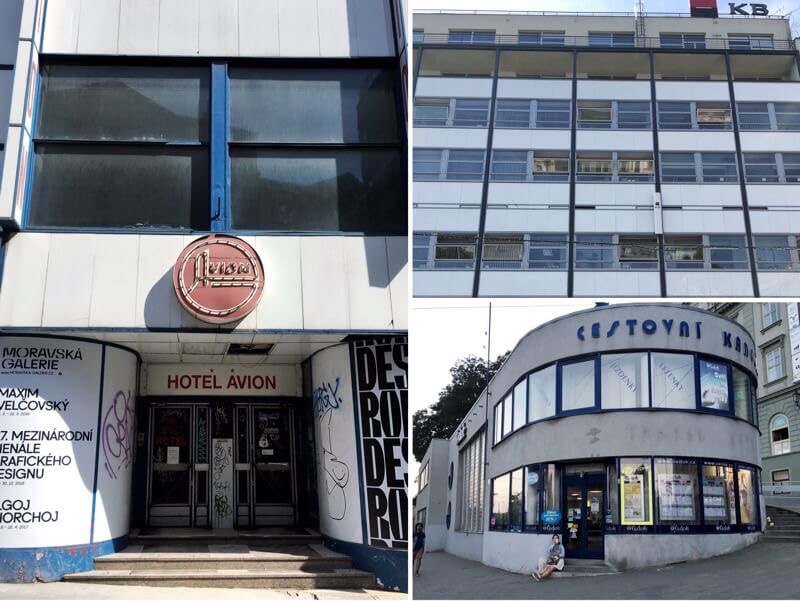
Admission and hours
Go anytime to take a look at the outside of the buildings: no one’s going to stop you!
Getting there and back
All three of these are within city center, and it’s easy to walk between them.
Medieval architecture
In contrast with functional architecture, medieval era architecture is also on display around the center of Brno.
- The gate of the Old City Hall has five turrets above it, and the center one is crooked because the stone master wasn’t paid for his work.
- St. James’s Church, which was built in High Gothic style, has an amusing little statue high above the pedestrians below. The two men are pointing their naked bottoms towards St. Peter and Paul’s Cathedral because they’re gloating about how their tower is 10m taller than the other church’s.
- The tomb of Bishop Fürst von Schrattenbach at St. Peter and Paul’s Cathedral has a sculpture of him not quite hiding inside it: his hat is still protruding from the top.
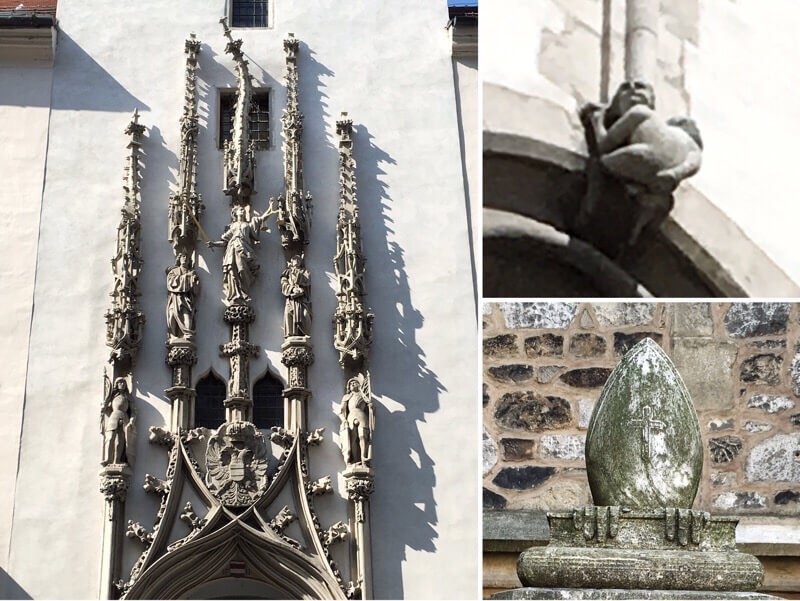
Admission and hours
- St. James’s Church
- Cathedral: free for church services
- M-F 07:30-09:00 and 18:30-20:00
- Su 07:30-12:00 and 18:30-20:00
- Ossuary: 140 Kč for adults, 70 Kč reduced
- Tu-Su 09:30-18:00
- Cathedral: free for church services
- St. Peter and Paul’s Cathedral
- Cathedral: free
- M-Sa 08:15-18:30
- Su 07:00-18:30
- Tower and treasury: 40 Kč for adults, 30 Kč reduced
- Summer season
- M-Sa 10:00-18:30
- Winter season
- M-Sa 11:00-17:00
- Summer season
- Crypts: 30 Kč for adults, 20 Kč reduced, includes access to the Diocesan Museum
- M-Sa: 10:00-17:00
- Cathedral: free
Getting there and back
All of these sights are in the center of the city: use your two feet on those cobblestones roads.
Monuments
A modern take on the astronomical clock, the Brno Clock is a black obelisk with multiple layers sitting on top of each other and rotating around a center axis. At 11:00, you can be one of four people who stick their hands inside it and wait for a single glass marble to fall out. 25% chance of winning a free souvenir related to a Brno legend!
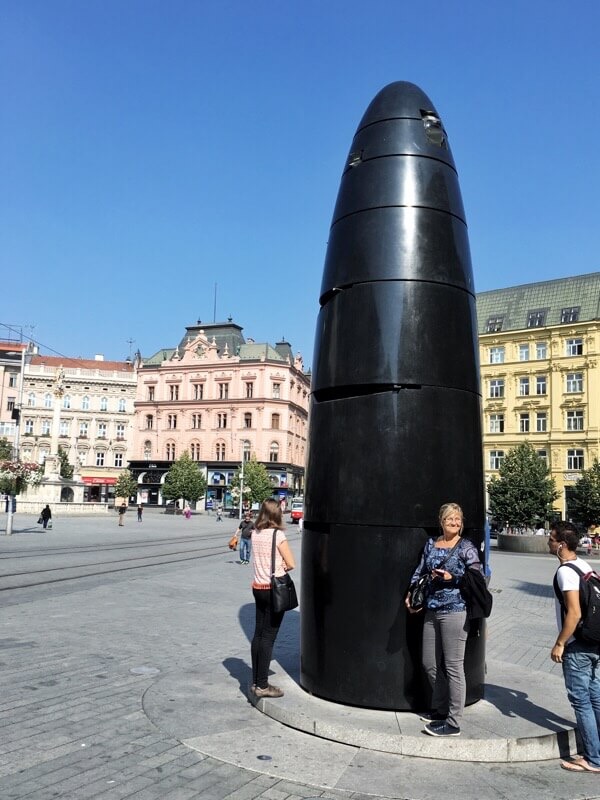
One of the four virtues of Plato, Justice takes on the form of an abstract man lifting a heavy-looking cube off the ground. A fountain spews water up into the cube, splashing some water outside the sculpture’s boundaries. Appropriately, this monument is located in front of the Supreme Administrative Court of Czech Republic.
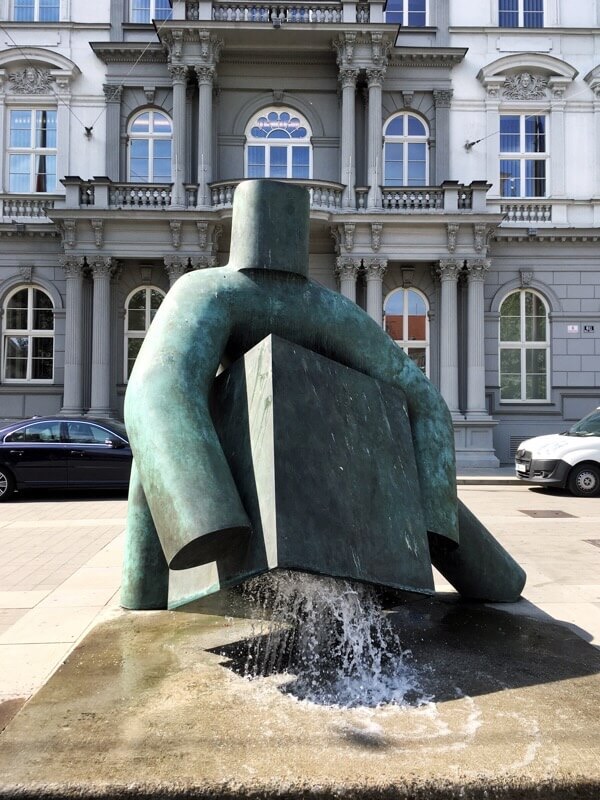
Admission and hours
Go see them anytime for free, but if you want to try your hand at the glass marble that comes out of the clock, go a bit before 11:00 to secure a spot.
Getting there and back
Both of these are an easy walk within city center.
Moravian Gallery at the Governor’s Palace
Moravské nám. 1a, 662 26 Brno-střed, Czech Republic
The entire Moravian Gallery is actually made up of five different buildings. I just went to the one in the Governor’s Palace. The permanent exhibit features works from the medieval era to the 19th century. As you might expect, many early pieces are religious, but later ones explore landscapes and other secular themes.
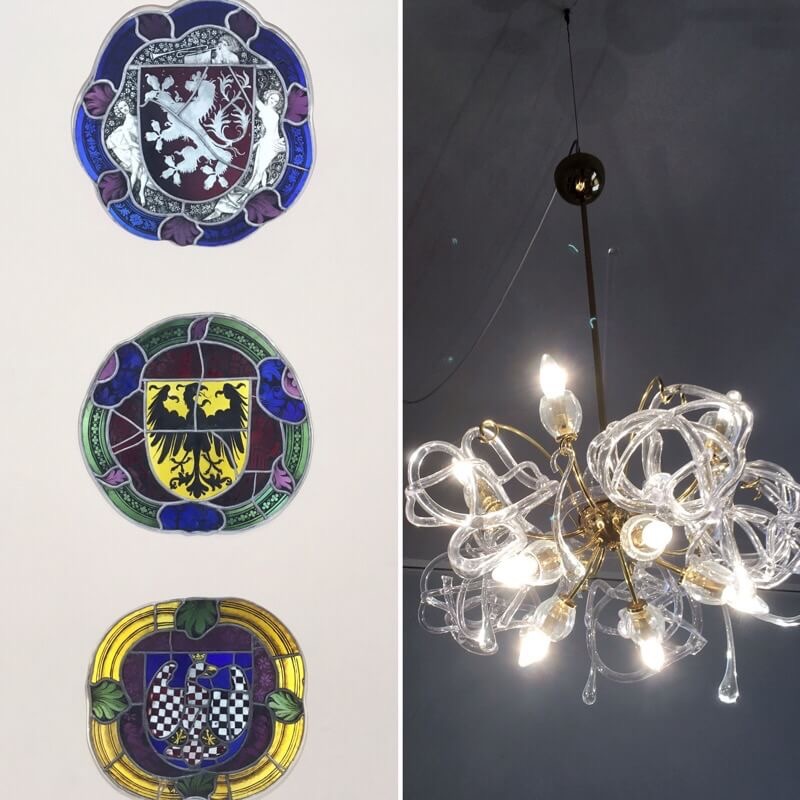
Admission and hours
The permanent exhibit is free; otherwise, you have to buy a ticket that’s good for entry into three of the five [Moravian Gallery][movarian-gallery] buildings (200 Kč for adults, 100 Kč reduced). Visit from Wednesdays and Fridays through Sundays from 10:00 to 18:00 or Thursdays from 10:00 to 19:00.
Getting there and back
This location is on the north end of city center, so it’s easily reached on foot.
Villa Tugendhat
Černopolní 45, 613 00 Brno, Czech Republic
Visiting Villa Tugendhat was the only thing I planned ahead of time since the only way to enter is with a guided tour, which is limited to 15 people per hour. The official website recommends booking at least two months in advance. If you like Mies van der Rohe (one of the developers of functionalism) and want to see something he designed that’s not a skyscraper, be sure to check out this luxury residence.
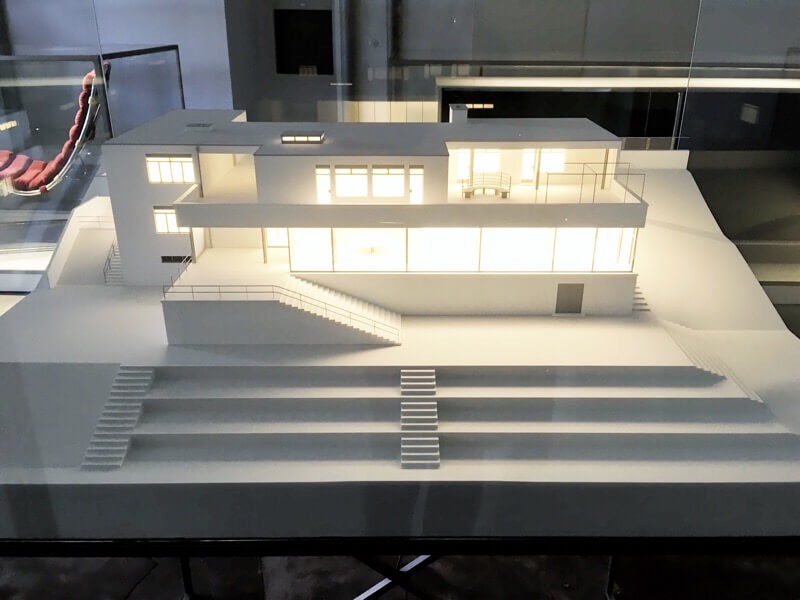
The first thing you see before the tour begins is the expansive garden and its view of the city.
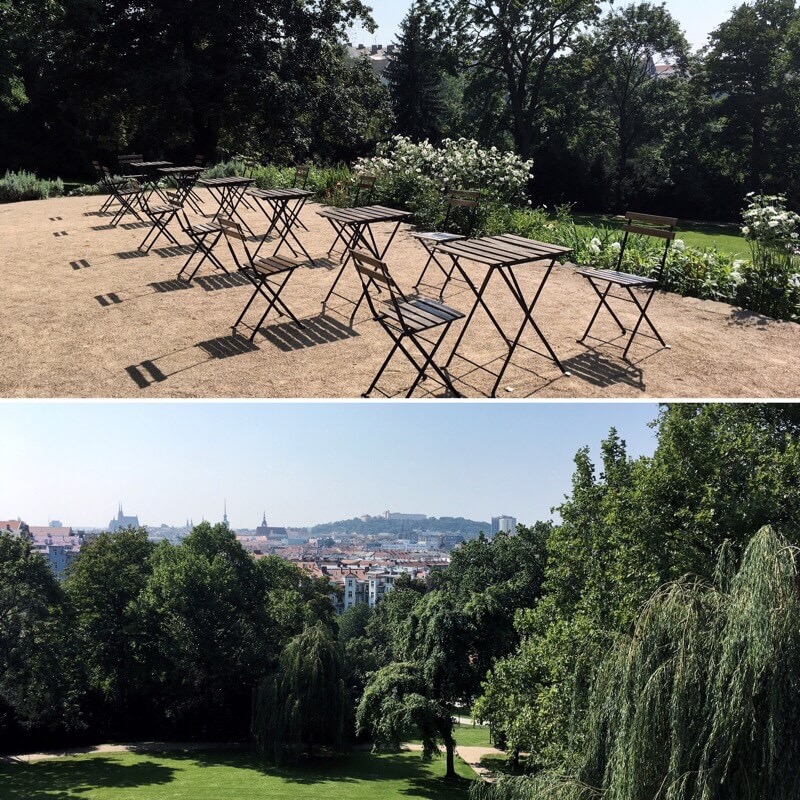
If you look closely, you’ll notice tiny details that make the place unique.
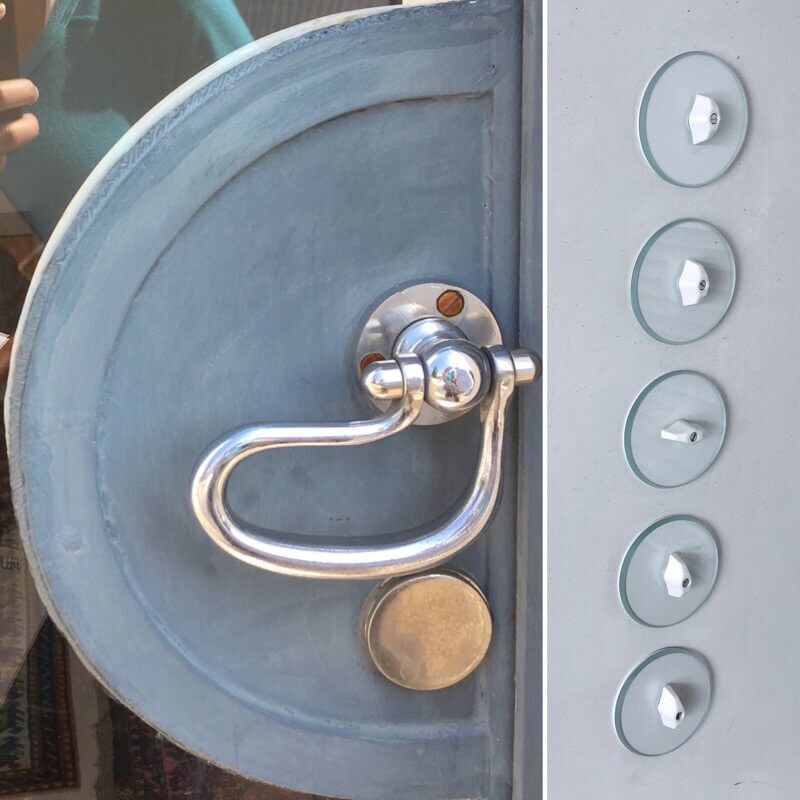
Upon entering, you’ll see a milk glass wall that lets in a gentle light and immediately separates you from the outside street.
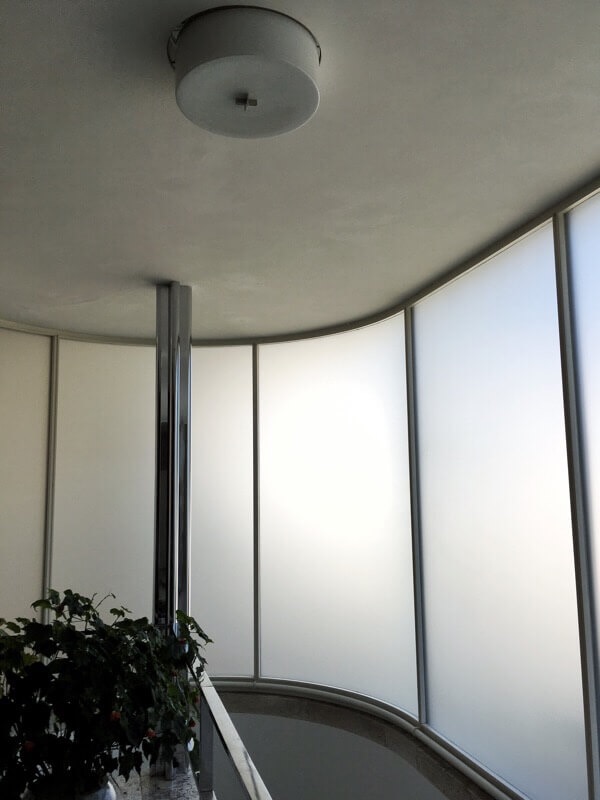
This floor is also where the bedrooms are. Every bedroom except for the one for the governess has a direct view of the garden and the city behind it.
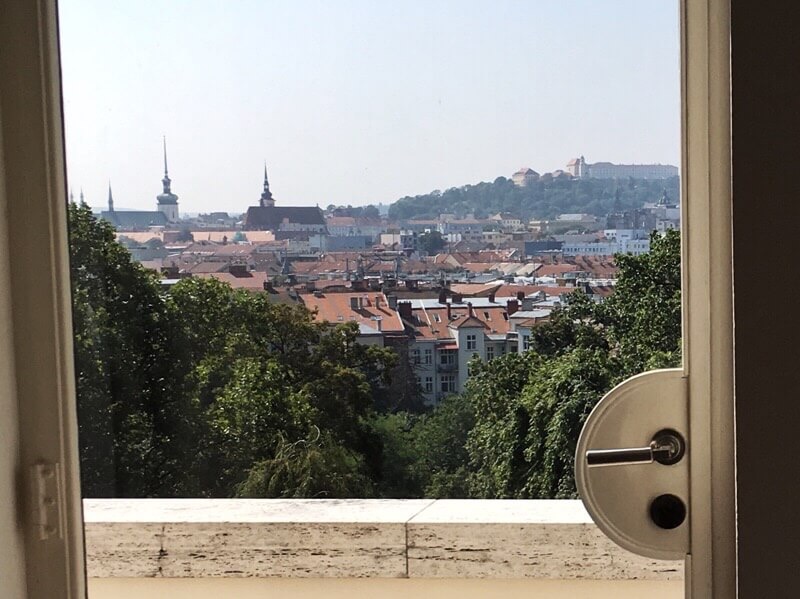
The bedrooms were furnished in a practical yet comfortable fashion.
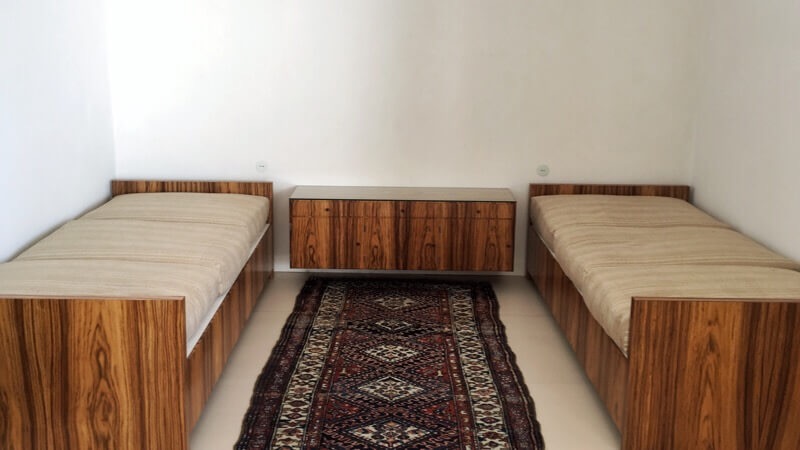
The doors throughout the house take up the entire vertical space from wall to ceiling, which heightens the sense of spaciousness. In some of the bedrooms, the closets even hid a wash basin inside so that the clean lines are undisturbed when the sinks are not in use.
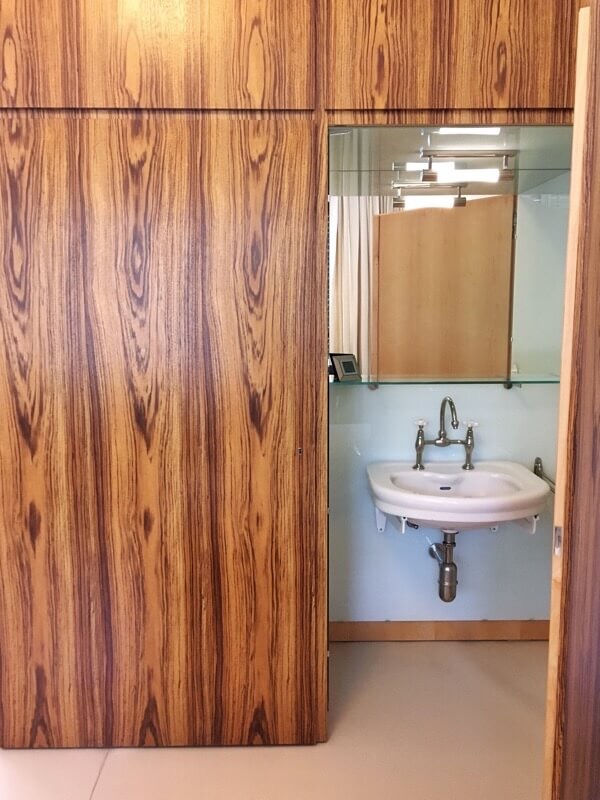
I love how he lined the upper part of the bathrooms with windows to let plenty of sunlight in without compromising privacy.
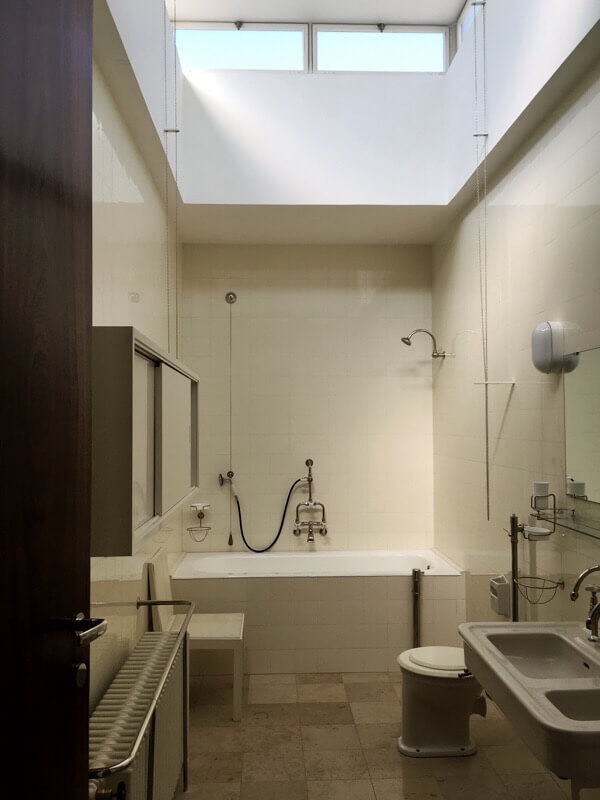
After descending the partially spiral staircase from the top floor, you reach the middle floor where the main living room is.
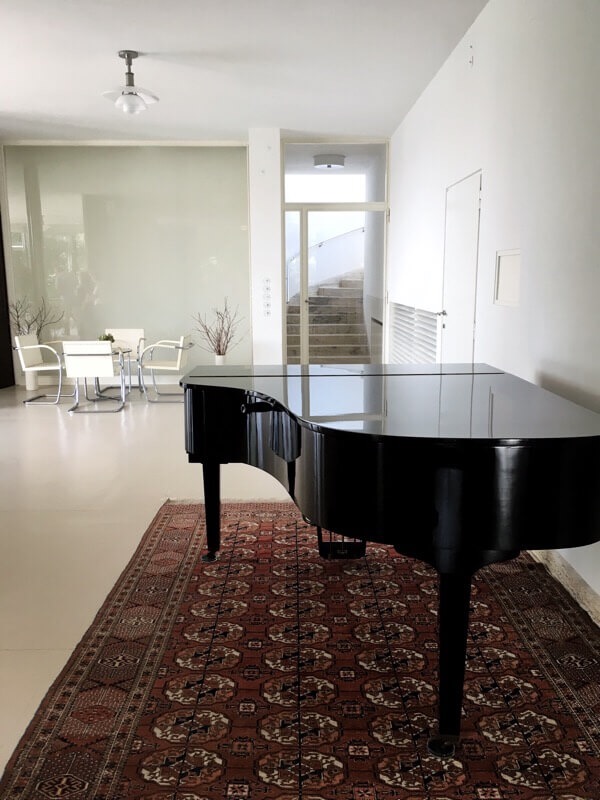
Mies’s design removed the traditional walls that separates functional rooms: the main living room is actually composed of several floating spaces with minimal permanent delineators between them. The first one is a small seating area with an opaque glazed wall that can be illuminated as shown below.
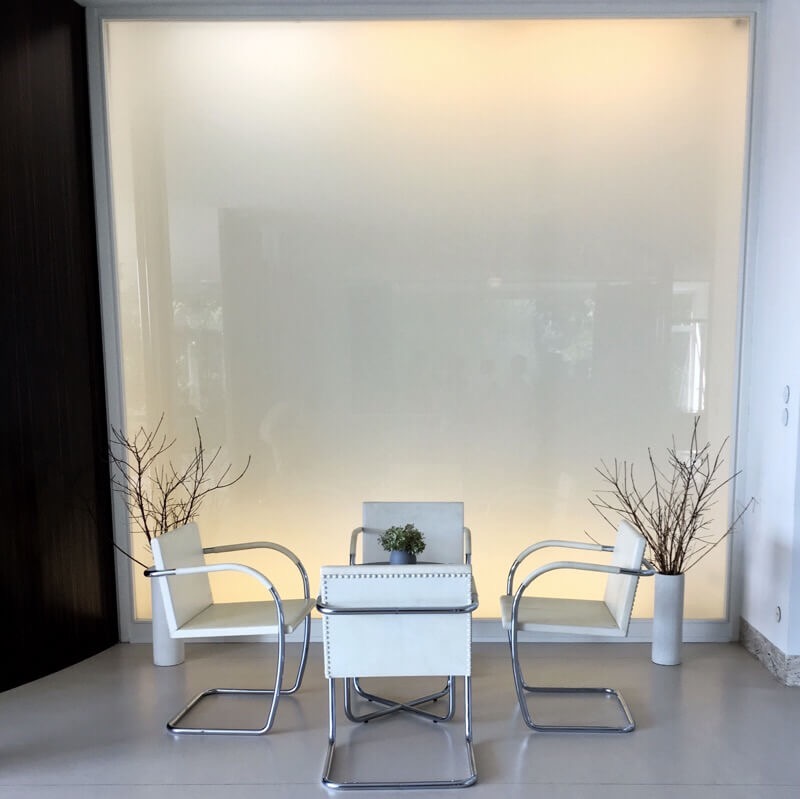
Continuing straight past the piano, you’ll enter the study area with a built-in bookcase veneered in the dark zebra stripe of Makassar ebony.
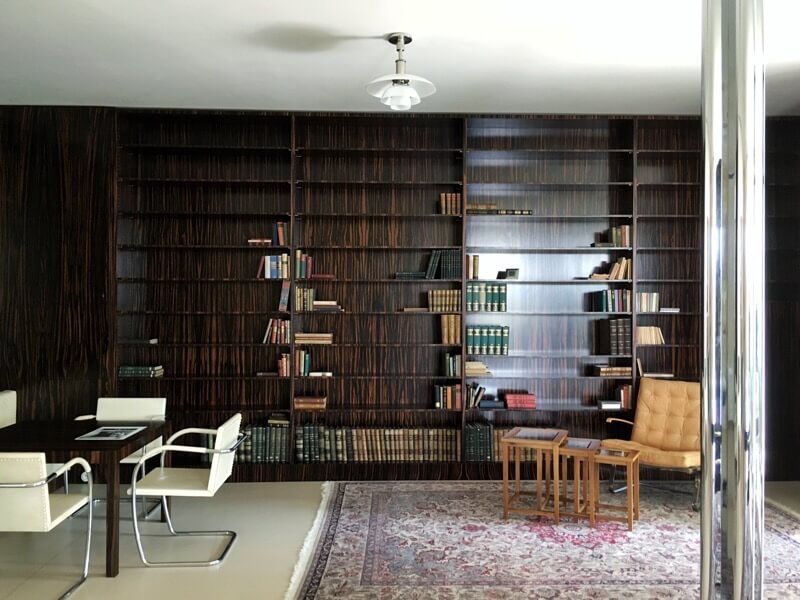
There’s also a large desk (not pictured) that faces the opposite direction from the bookcase, towards a Moroccan onyx wall. The onyx is translucent in some areas, so when the evening sun is shining, the wall appears reddish in those parts.
The grand seating area is on the other side of the onyx wall and faces the large picture windows from which you can see the garden.
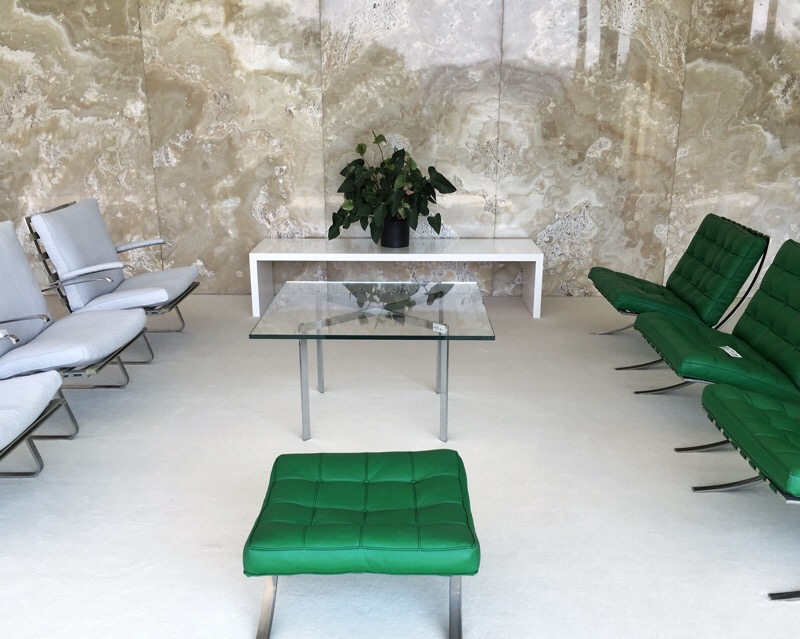
The dining table is along the same set of picture windows and can be configured to three different sizes, thanks to two concentric circles of removable panels. Here, Makassar ebony is used again for the curved partition wall.
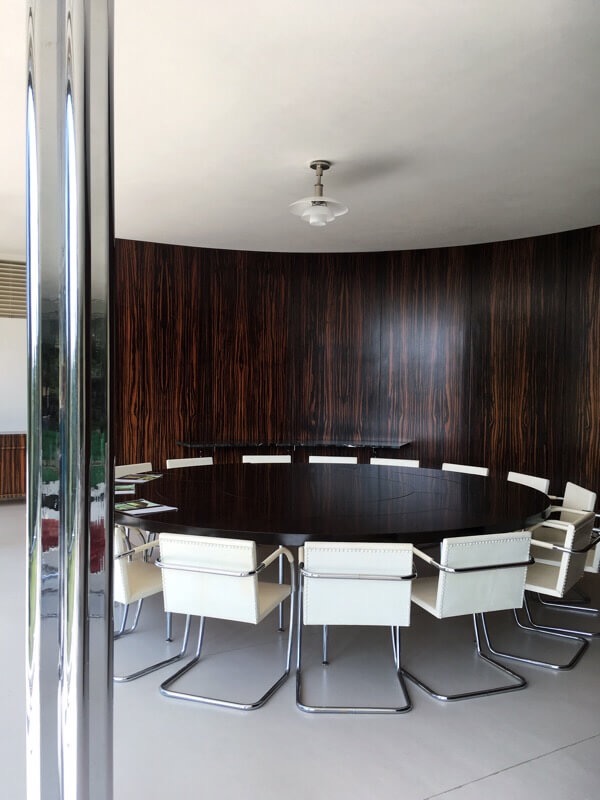
Both the windows directly in front of the grand seating area and the dining room are independently controlled by electric motor to roll them up or down as the weather permits, much like a car window.
In the basement is where the innards of the house live. For instance, the electric motors that power the picture windows in the main living area are located in the basement. Additionally, Mies designed a simple yet effective air circulation system that is controlled by this panel.
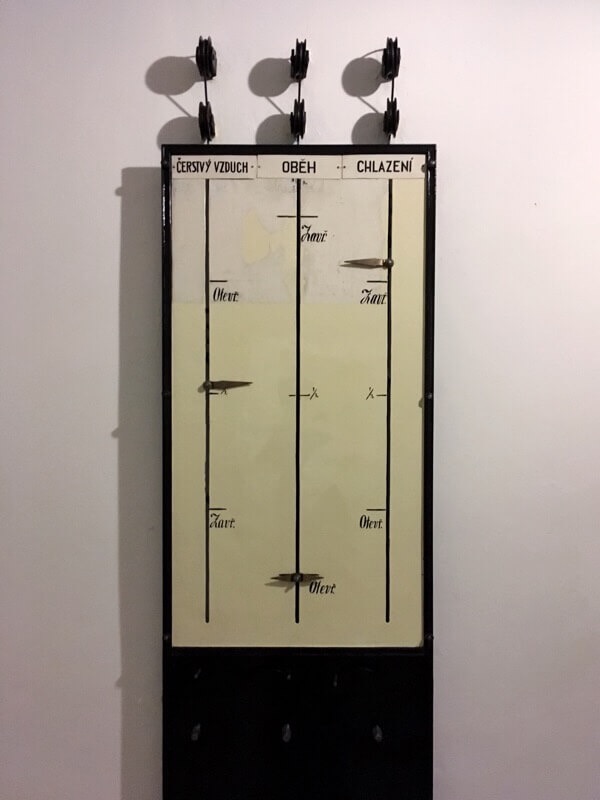
Mr. Tugendhat was a hobby photographer, so there’s also a darkroom downstairs. You can also see a typical washing machine from the early 1900s in what used to be the laundry room.
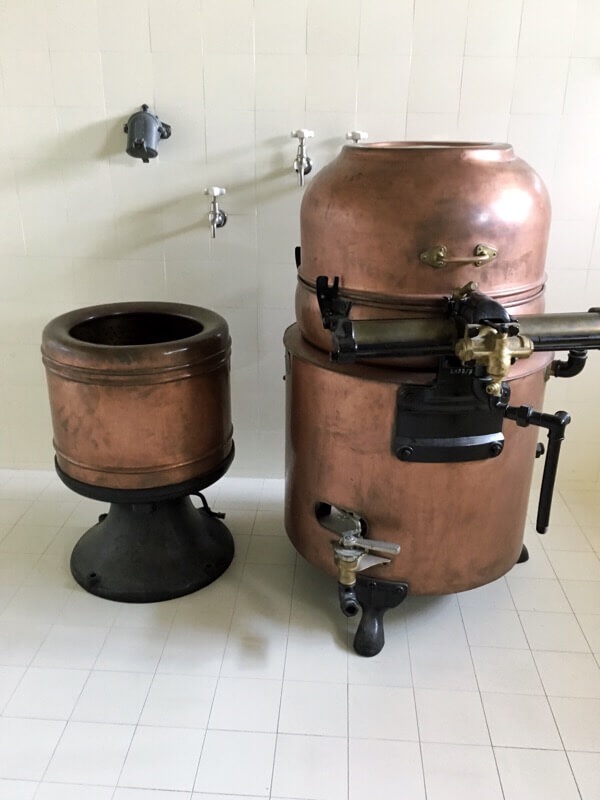
A nice gift shop and detailed exhibit are downstairs as well,
Admission and hours
Depending on how much you want to see, you have three price points:
- Basic tour (60 mins): 300 Kč for adults, 180 Kč reduced
- Extended tour (90 mins): 350 Kč for adults, 210 Kč reduced
- Garden only (no guide): 50 Kč for everyone
You can purchase tickets in advance by using their online reservation system or by emailing them directly. (The website didn’t work for me, so I had to email them.)
From March through December, the villa is open from Tuesday through Sunday, 10:00 to 18:00. If you go in January or February, you can only visit Wednesday through Sunday from 09:00 to 17:00.
Getting there and back
From city center, it took less than 30 minutes to walk there, but you can take tram 9 from the main railway station to the Tomanova stop.